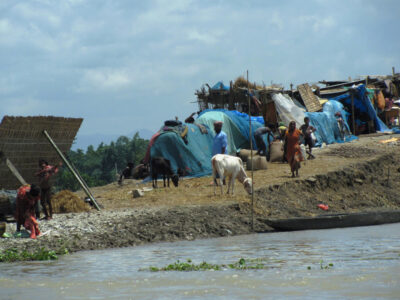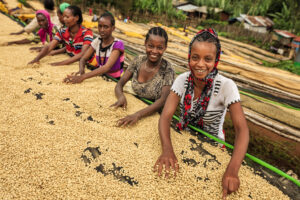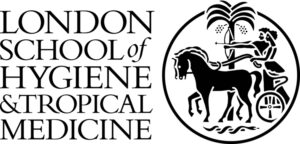Project Info
Project Description
The incidence of natural disasters has been on the rise over the last few decades, primarily due to environmental degradation and climate change. The impact of these disasters on affected populations is severe, both at the local and regional levels.
Over the past 50 years, the number of people exposed to natural disasters, such as floods and tropical cyclones, has doubled. Women and children bear a disproportionate burden during and after these crises. In 2020, the UN High Commissioner for Refugees reported that there were 82.4 million forcibly displaced people globally, with refugees accounting for more than a quarter of this population.
Evidence on the effectiveness of economic development interventions in humanitarian settings in low – and middle-income countries: a mixed method systematic review
Funder: Centre for Excellence for Development Impact and Learning (CEDIL) at the London School of Hygiene and Tropical Medicine

©Oxfam International
Background
This mixed-method review aims to expand the scope of economic development interventions by including livelihoods programs, market support programs, and local area development projects. Additionally, women’s empowerment programs that incorporate an economic component, such as savings clubs and microcredit, will also be included.
Approach
This review will investigate the impact of economic interventions on individuals living in humanitarian and conflict-affected settings. Specifically, it will examine the effects on economic wellbeing, food security, nutrition, social, physical, and mental health outcomes.
Additionally, the review will consider the impact of economic interventions on individuals in host communities to refugees from humanitarian and conflict-affected settings, including attitudes and other economic outcomes.
Read report
Lead Author: Suchi Kapoor
Conflict and atrocity prevention strategies for violence reduction and sustainable peace: evidence and gap map
Funder: Foreign, Commonwealth & Development Office (FCDO)
Background

Following a relatively peaceful period from the mid-1990s at a global level, there has been a sharp increase in numbers of armed conflicts since 2011. Atrocities, including genocide and crimes against humanity, war crimes, and ethnic cleansing, occur during and outside of armed conflicts. There are increasing calls for effective strategies for conflict prevention (CP) and atrocity prevention (AP), and to address the effects on societies experiencing such forms of violence.
This evidence and gap map (EGM) aims to help the UK FCDO and the international community in accessing the best available evidence to inform its work planning in conflict and atrocity prevention (CAP) strategies. The CAP EGM provides a global public resource to support decision makers in accessing, understanding the limitations of, and utilising evidence about what works for conflict and atrocity prevention.
Approach
The EGM includes studies that were able to establish the causal relationships between CAP interventions and conflict, atrocities, violence prevention and social cohesion. We included ongoing and completed primary studies and evidence synthesis of the effectiveness of CP and AP interventions in low- and middle-income countries (L&MICs). Primary studies that used quantitative statistical methods, called large-n designs, and those using qualitative theory-based methods to make causal claims, called small-n designs, were both included.
We collated CAP evidence using an intervention-outcome framework which was developed based on existing related literature and stakeholder consultation. We also assessed confidence in the included studies, and developed and piloted a new tool for qualitative theory-based causal studies.
Primary conclusions

- The EGM includes 542 studies of interventions with explicit conflict reduction aims (428 studies), explicit atrocity reduction aims (21 studies) and studies with implicit conflict and atrocity aims (91 studies).
- An additional 216 records did not meet the EGM eligibility criteria on study design, but were thematically relevant studies of the effects of CAP interventions, which are provided as a supplementary evidence ‘bucket’.
- The map points to a need for more primary studies related to indirect interventions addressing the underlying causes of conflict and atrocity, direct interventions relating to diplomacy, law and accountability, and research, monitoring and assessments, and interventions with either explicit AP aims, delivered in latent conflict settings, or that seek changes in key core outcomes relating to diplomatic relations and diplomacy.
- The map identified promising areas for evidence synthesis, i.e., areas where primary studies exist but have not been rigorously synthesised using systematic review methods.
Lead Author: Suchi Kapoor Malhotra and Hugh Sharma Waddington
Effectiveness and Cost-Effectiveness of Ecosystem-Based Disaster Risk Reduction Interventions in low- and middle-income countries: A Rapid Evidence Assessment
Funder: Foreign, Commonwealth & Development Office (FCDO)

Background
We have collaborated with FCDO to address the increased risk of natural disasters due to climate change and ecosystem degradation. There are many initiatives to promote investment in healthy ecosystems to reduce disaster risks, including the 2030 Agenda for Sustainable Development Goals (SDGs), the Sendai Framework for Disaster Risk Reduction, and the European Union’s nature-based solutions. In this review, we have looked at ecological disaster risk reduction measures to synthesise the effect of the interventions on the mitigation of the damage caused by natural disasters and evaluate the economic benefits of the Eco-DRR interventions.
Inclusion Criteria
Low- and middle-income countries are disproportionately affected by natural hazards, including floods, hurricanes, cyclones, and earthquakes. Nearly 90 percent of deaths due to natural hazards occurred in L&MICs between 2000 and 2018 (World Meteorological Organization, 2021). Hence this review is focussed on LMICs.
This is a systematic review that includes empirical primary studies measuring the impacts and cost-effectiveness of Eco-DRR interventions. We look for impacts on hazard prevention, hazard mitigation, and economic outomes. Eligible designs include randomised controlled trials (RCTs) and quasi-experimental designs (QEDs). QEDs are studies that use statistical methods in the absence of randomised assignment to intervention, such as discontinuity design, interrupted time series design, difference-in-differences analysis applied to controlled pre-test post-test data, and statistical methods applied to post-test cross-sectional data only (e.g. statistical matching and adjusted regression analysis).
Approach
Two reviewers were assigned to screen the Title and Abstract for each study. Followed by the double screening of the full-texts, the results were then double-coded. All disagreements were resolved by a third reviewer. This is how the team concluded a thorough data collection for the review. The included data was collected from the set of studies that were critically appraised by a pre-validated tool designed by the Campbell Collaboration team.
The data is to be analysed; the effect size estimates with 95% confidence intervals from the included studies is to be extracted. Effect sizes will be measured as the standardised mean difference (SMD) for continuous outcomes, and the odds ratio (OR) for dichotomous outcomes. The effect size calculations will be performed using an effect size coding tool developed for this review, and, in a minority of instances, the Campbell Collaboration online effect size calculator.
We address the questions:
“What is the nature of literature of Eco-DRR interventions implemented in low- and middle-income countries?”
This contains five sub-questions:
1.1 What forms of Eco-DRR (including blue, green and hybrid infrastructure) have been found in academic and grey literature, and where have these evaluations been conducted?
1.2 What research methods have been used to evaluate the impact and cost-effectiveness of Eco-DRR?
1.3 What cost-effectiveness studies have been done on Eco-DRR and how does it compare to other forms of DRR?
1.4 How extensive is the literature on Eco-DRR measures in ODA-eligible countries?
1.5 Where are the important evidence gaps in the literature?
“How effective and cost-effective are Eco-DRR interventions implemented in ODA-eligible countries compared to other forms of DRR?”
This has two sub-questions:
2.1 What is the effectiveness and cost-effectiveness of Eco-DRR measures?
2.2 How do effectiveness and cost-effectiveness vary by form of Eco-DRR (including blue, green and hybrid infrastructure) and by geographical location?
We will report the Risk of Bias assessment of the included papers and a narrative description of the findings. Our responsibility will include setting out the limitations of the included papers and stating how the limitations can be addressed through upcoming projects that use this report for reference.
This is an ongoing project.
Lead Author: Suchi Kapoor Malhotra
Youth and Jobs in the Era of Climate Change, Conflict and Crisis: An Evidence and Gap Map
Funder: International Fund for Agricultural Development (IFAD)
Background

Persistent rural-urban inequalities in conjunction with conflict, crisis (financial, food, pandemics) and climate change severely affect rural populations. The intersection of inequalities affects marginalized and vulnerable sections differentially. There has been a renewed interest in empowering youth across sectors mostly geared towards achieving sustainable development goals and there is an impetus towards recognizing youth as equal partners on the road to development.
This evidence and gap map (EGM) plots studies on the effectiveness of interventions for youth employment in developing countries in the context of climate change, conflict, and crisis, demonstrating where evidence exists and where there is a lack of evidence.
Approach
This EGM includes studies from an existing global map on youth employment interventions. Supplementary searches were also conducted to identify additional studies on climate change and COVID-19 contexts.
The global map was based on a comprehensive search strategy comprising of systematic searching of academic databases, manual search in development agency websites, citation searching in systematic reviews and the ten most recent impact evaluations, and online screening of the ten most recent volumes of relevant journals.
The supplementary searches for the current EGM were conducted in the included studies in the global map by using various keywords such as adaptation, mitigation, ecosystem, nature, climate, and environment to determine studies with climate-related and natural disaster risk context. In addition, Google Scholar was used to identify eligible studies using various search strings.
Primary conclusions

- The EGM contains 344 studies with 192 impact evaluations, 143 process evaluations and nine systematic reviews.
- There is sufficient evidence on skills training interventions and employment services interventions. Education, technical and vocational training, life skills training, internship, apprenticeship and placement support and business skills training under skills development intervention have a higher number of studies when compared to other intervention sub-categories.
- Employment as an outcome category is reported in the highest number ofstudies, followed by welfare, entrepreneurship, and education and skills.
- The skills development interventions appears to be popular in conflict-affected setting as in settings not affected by any crisis.
- The relatively low number of studies in humanitarian settings and pandemic affected studies indicate the lack of safe and enabling environment for youth employment interventions to work.
- The climate change affected regions had least number of studies when compared to other contextual setting.
Lead Author: Sabina Singh
Read the full report here
View the Intervention-Outcome map
View the Intervention-Context map
 |
 |
